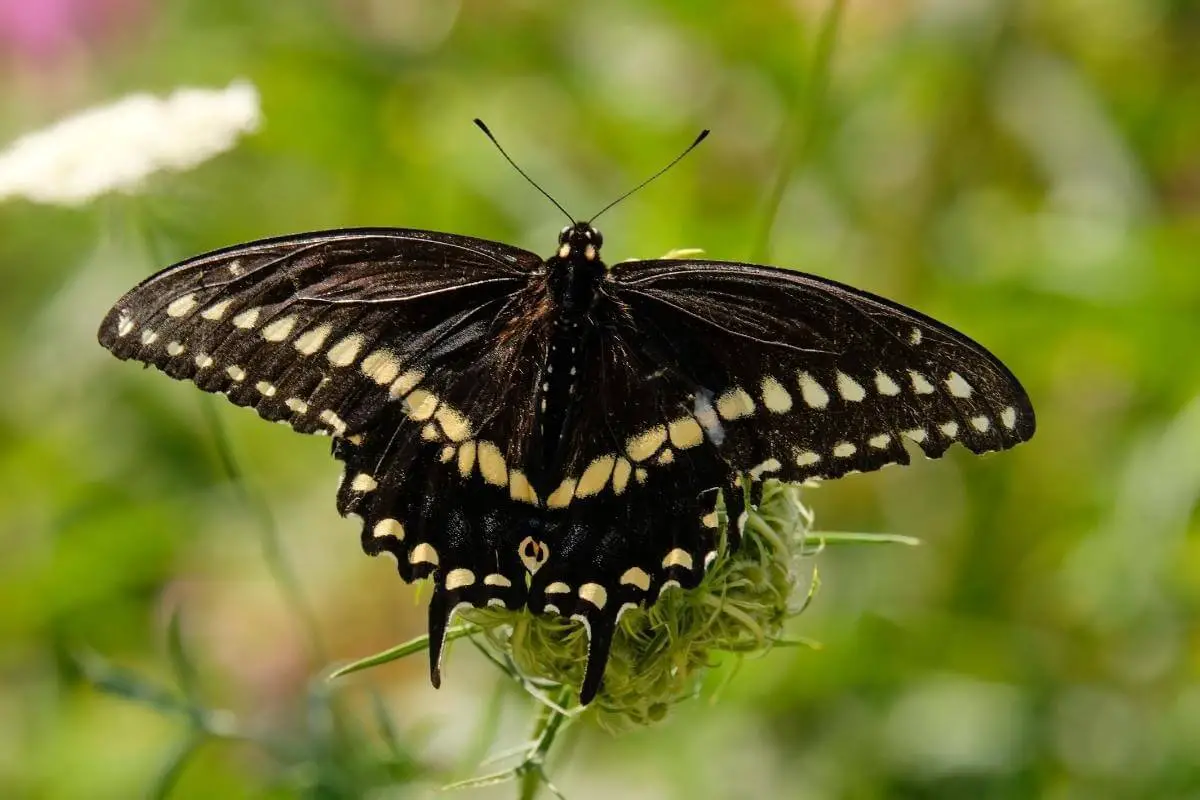The black swallowtail (Papilio polyxenes) is a beautiful butterfly with a distinctive wing shape and striking detailing. If you are keen to tell the difference between the male and female versions of this common garden visitor, then you will need to pay attention to the wings of the black swallowtail. The female usually has more blue and less yellow on its wings and with the male swallowtail, the opposite is the case.
If you want to learn more about the male and female black swallowtails and what they get up to in your garden, this concise article will explain all the basics as well as some natural ways to invite black swallowtails and other butterflies to your backyard.
About the Black Swallowtail
The black swallowtail is one of the beautiful natural features of a North American summer.
Also known as the American swallowtail (in contrast to the British Swallowtail butterfly Papilio machaon britannicus), it can be found anywhere between southern Canada and the upper reaches of South America.
The black swallowtail is a butterfly of the prairies and is found in fields, meadows and other open spaces, including backyards that offer nectar-rich wildflowers.
It is an all-American butterfly and is even designated as Oklahomas state butterfly.
Black Swallowtail Male Versus Female
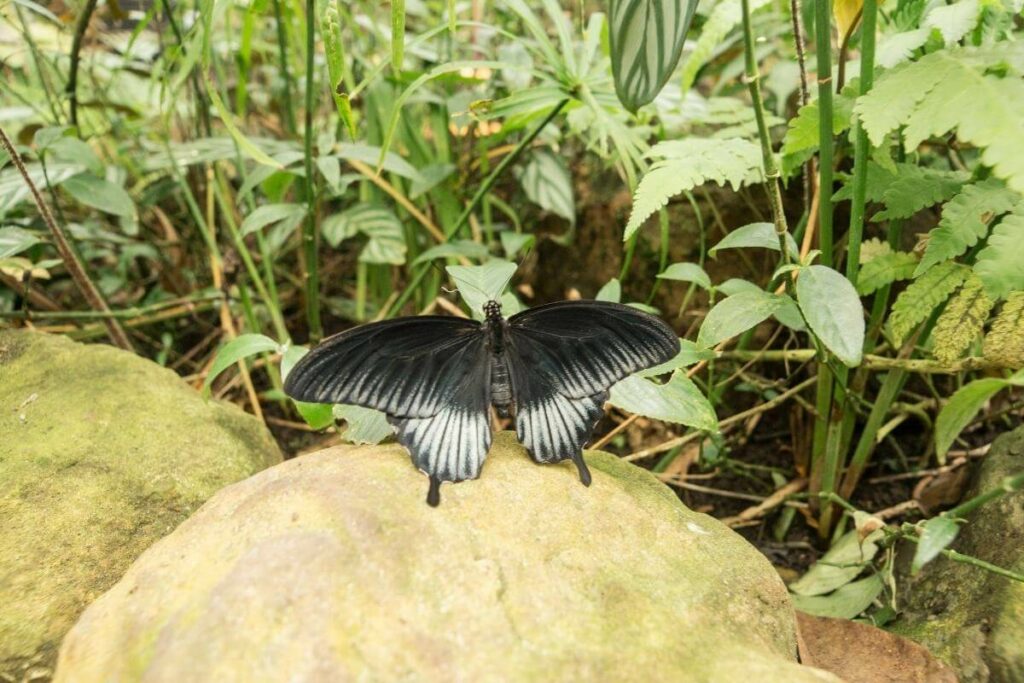
By recognising the size and features of black swallowtails, you will easily be able to distinguish male black swallowtails from female black swallowtail.
Here are the main differences:
- Female black swallowtail butterflies tend to be larger
- On the upper wing surface of the butterfly, the two rows of yellow spots are larger and brighter in males and smaller and fainter in females.
- The blue area of the lower wing is bolder in females
- The female appearance can mimic another related butterfly species, the pipevine swallowtail (battus philenor) which is poisonous.
The wingspan of the black swallowtail is usually between 6.5 and 10.6 centimetres (2.5 to 4.2 inches).
Both male and female black swallowtail butterflies have:
- a red eyespot (with a central black dot) on the hindwing
- a single yellow dot on the front edge of their wings
- identical ventral wing patterns with pale yellow spots and bright orange dots with areas of light blue.
- and of course, the characteristic elongated swallows tail.
The ventral wing pattern also mimics poisonous relatives and is known as Batesian mimicry.
Interesting Fact: As the black swallowtails rest with their wings closed, both sexes will have the mimicking wing design exposed to deter predators.
Black Swallowtail Butterfly Garden Activity
By understanding the behaviours of the black swallowtail, you can prepare your garden to be inviting to them.
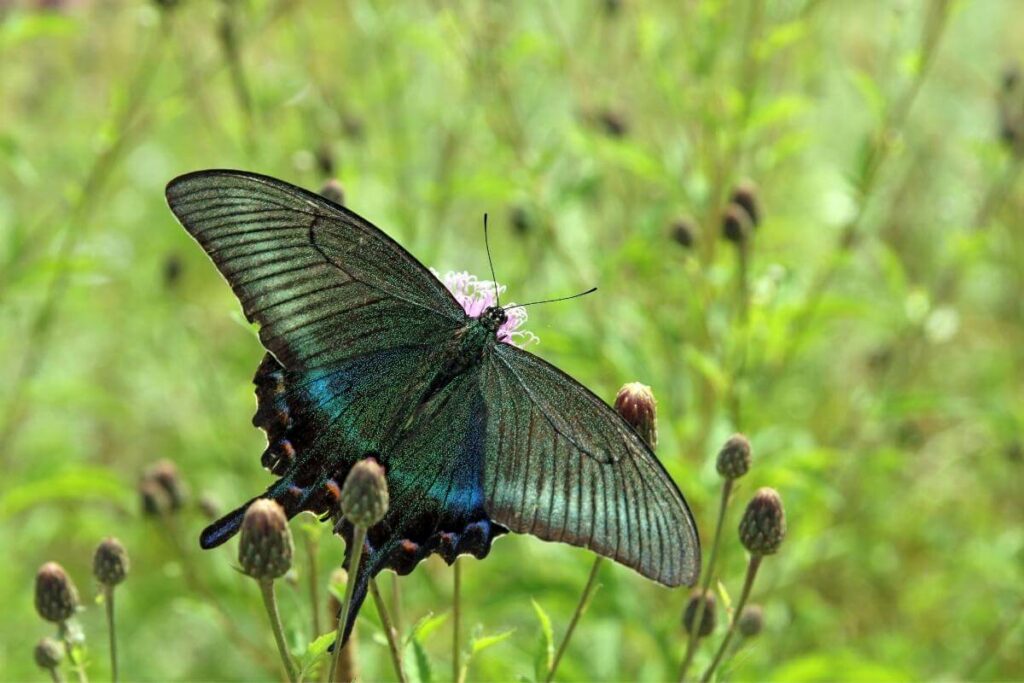
Blacktail swallowtails are territorial and the male swallowtail will want to defend and patrol their patch looking for female visitors.
They can be aggressive and male that crosses into a patrolled territory will be challenged and chased away.
Competitions for females is high as there is a very high black swallowtail male vs female sex ratio with 4 males competing for each available female.
They feed on nectar from flowers from classic American flower species like:
- Zinnias
- Verbena
- Milkweed
They also obtain minerals and salts from moist ground.
They spend a significant amount of time roosting in sheltered areas, will also bask in the sun to raise their body temperature.
If overheated they lower and shade their abdomen beneath their wings.
Lifecycle of the Black Swallowtail Butterfly
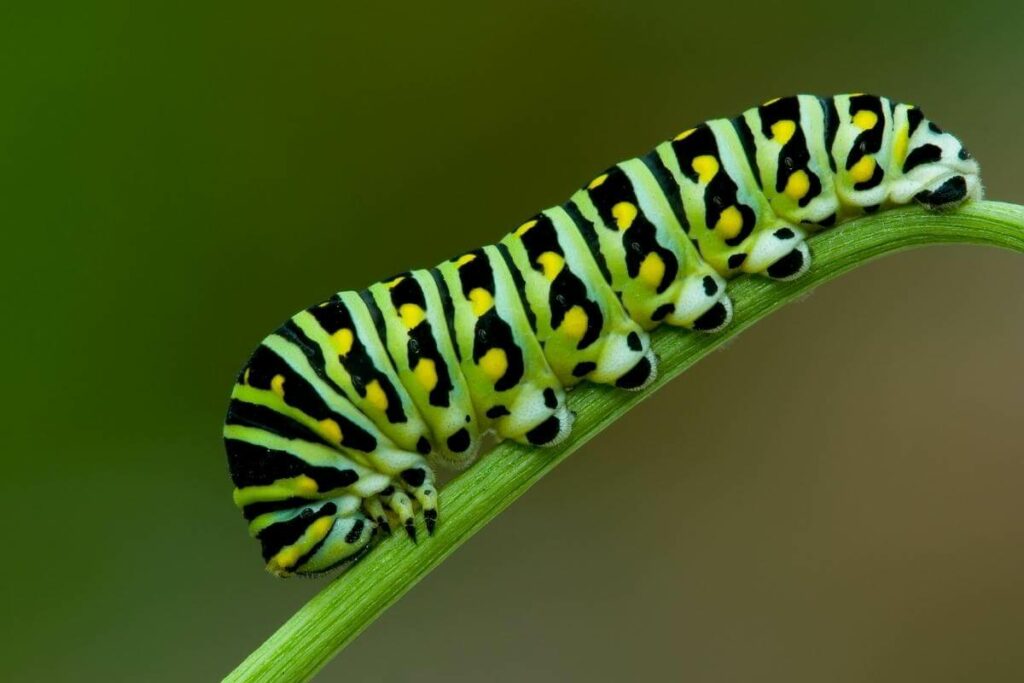
Black swallowtail butterflies start their lives as eggs that are deposited by females as single eggs on host plants.
Black swallowtail butterfly eggs take up to 10 days to hatch.
One of the most common host plants for the caterpillars that hatch is parsley so the caterpillars are known as parsley caterpillars.
They are voracious eaters of parsley and other common herbs as they fulfil their larval and pupal stages. They absorb and concentrate toxins from these plants that make them taste bad to predators.
Other host plants include:
- Dill
- Fennel
- Celery
- Carrot
The parsley caterpillar passes through a larval stage lasting up to 30 days, and pupal stages lasting up to 18 days depending on environmental conditions.
The chrysalisSwallowtail formed by the caterpillar is usually green or brown to blend in with surroundings.
Adult butterflies emerge in the Spring, with males typically emerging first to secure their territories.
Having Black Swallowtail Butterflies Visit Your Garden
Black swallowtails make an amazing visual display and are welcome pollinators in most backyards.
However, the parsley caterpillar may be considered a pest by some gardeners and growers, due to its predilection for parsley and other herbs.
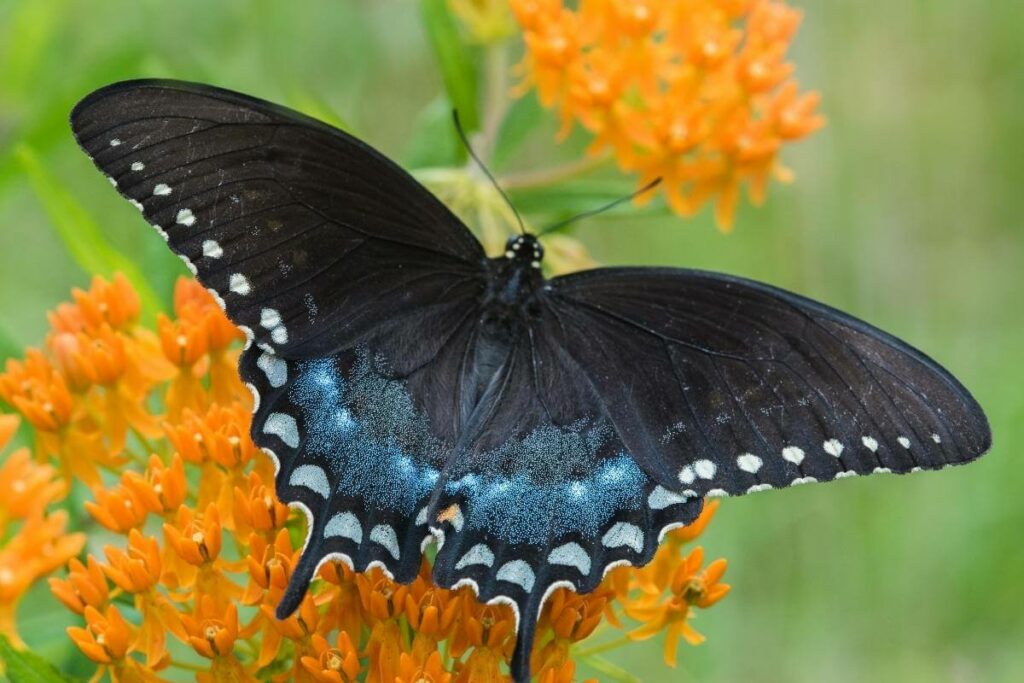
They are voracious eaters and have been known to consume whole plants.
Thankfully they are not numerous and do not need to be controlled by pesticides which would harm not only the black swallowtail but also other beneficial pollinators.
Gardeners who want to protect their plants can simply remove individual caterpillars and put them elsewhere or kill them.
Laws Of Nature: Black swallowtails and parsley caterpillars do have natural predators that prevent them from becoming true pests.
Consider Welcoming Black Swallowtail Butterflies to Your Garden
If you would like to watch this American beauty from your back porch, you can help the black swallowtail butterfly feel at home by planting host plant species like parsley or dill in your yard.
If you grow carrots for them, both you and the caterpillars will have something to eat.
Gardeners who can tolerate the appetite of the parsley caterpillar are benefitted from the bad taste of these caterpillars repelling birds and other unwanted predators which can also damage your other crops.
Final Words
Planting wildflower or Zinnia seeds will provide the adult butterflies with nectar to feed on all summer long.
Attracting pollinators like the black swallowtails not only benefits your garden but those in your local community too.
You May Also Like
- Are Dragonflies Good for the Garden? (Pros and Cons)
- Do Praying Mantises Fly?
- Do Grasshoppers Bite? Are They Dangerous?
